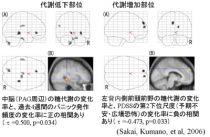Ways to alleviate mood disorders through attention training
2013-0130-16

- researcher's name
-
about researcher KUMANO, Hiroaki Professor
- affiliation
-
Faculty of Human Sciences School of Human Sciences
- research field
-
Clinical psychology,Applied health science,Psychiatric science,General internal medicine (including psychosomatic medicine)
- keyword
-
background
The number of patients suffering depression is skyrocketing, and it topped one million in 2008. The treatment of depression, mood disorders, anxiety disorders, eating disorders, and other mental disorders revolve around pharmacotherapy, but there are alternative methods that do not rely on drugs, such as counseling and cognitive-behavioral therapy. It is known that a combination of both methods boosts the likelihood of recovery.
summary
Focusing on “rumination = repeated recalling of past events and being tormented by them,” often seen in depression, we are developing a form of neurobehavioral therapy based on attention training to alleviate rumination. We can provide treatments that suit the symptoms of the patient through use of fMRI and optical topography to ascertain changes in associated brain regions.
application/development
Developing an attention training program to alleviate mood disorders
Examining the synergy between cognitive behavioral therapy and neurobehavioral therapy to treat mood disorders
Evaluating and quantifying the effectiveness of methods to treat mood disorders.
predominance
We are considering developing a cell phone application or physical and mental health monitoring device that is halfway between being medicinal and therapeutic, that can be used easily at home and is easy to download. Exercising self-control in everyday life is an absolute necessity in treatment, so we are also looking into applying this technology in the treatment of diabetes and lifestyle diseases.
purpose of providing seeds
Sponsord research, Collaboration research, Technical consultation
material
same researcher's seeds
-
 Evaluation of comfort through measurement of brain activity
Evaluation of comfort through measurement of brain activity
posted:
2014/05/21
